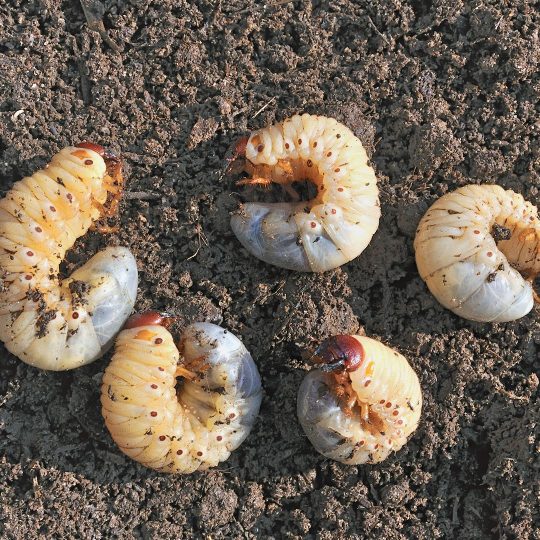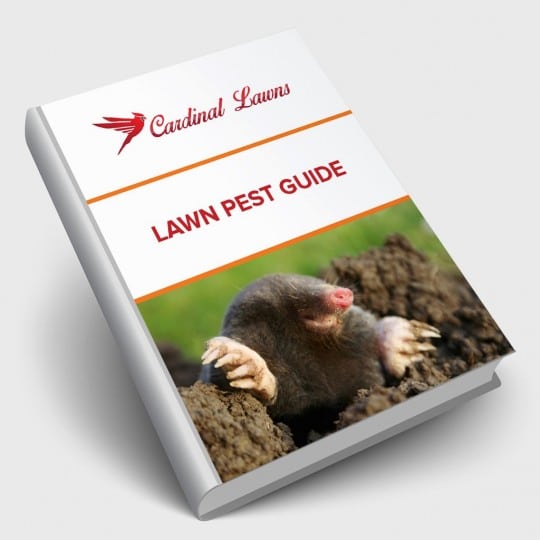Late Summer Lawn Pests
How to Identify and Control Them
Posted
August 10, 2023

Before you start planning that end-of-summer bash, be sure you safeguard your yard from late summer lawn pests. From bugs that bite and sting to ones that feast on foliage and grass, learn how to keep these pests out of your party.
Late Summer Lawn Pests
You may not be the only one enjoying your yard this summer. There are plenty of pests who would love to hide in your shrubs, dine on grass roots, and even sneak a sip of your blood every now and then. Here are some of the pests you may come across this season.
- Chiggers. Tiny, red mites live in low shrubs, tall grass, and weeds. They cling to a human host, inject an enzyme that dissolves skin tissue, and then feast on the liquid. This leaves red, itchy welts around the ankles.
- Fleas. Another tiny pest that hides in the grass waiting for a host to feed from. After they suck blood from a human or pet, they leave the skin red, itchy, and flaky.
- Ticks. They can be carried into your lawn from other wildlife and hide in the bushes or tall grass waiting to attach to another host. Not only do they cling to skin and suck blood, but they can also transmit harmful diseases.
- Chinch Bugs. Baby chinch bugs are wingless with red or orange markings, while adults are black with white markings on their wings. They prefer to suck the juices from grass blades and then inject it with a toxin that turns your lawn from lush green to a burnt yellow.
- Ants. There are many types of ants that could invade your yard. Some are harmless, only leaving large mounds of unsightly soil to mark their colony. Others can do more damage from a venomous sting or their hunger for wood.
- Cutworms. These caterpillar-like pests hide in thatch and chew on grass at the soil level. They also burrow into your lawn doubling their damage, leaving circular patches of dead grass behind.
- Armyworms. Another caterpillar-like culprit that causes large patches of dead grass from feeding on it during the day.
- Mole crickets. While they look like crickets, they feature two front legs shaped like mole claws. They use these to dig underground tunnels that end up damaging grass roots throughout your lawn. It may also feel spongy underfoot since these crickets have separated the turf from the ground.
- Two-Lined Spittlebugs. If you find a soapy substance throughout your lawn you could be dealing with these yellowish nymphs that surround themselves in secreted spittle for protection. They also suck on grass juice, leaving dead patches behind.
- White Grubs. Not only do these plump, C-shaped larvae destroy grass roots and soil from below the surface, but they also grow into beetles that can rip apart the rest of the plants in your garden.
Summer Lawn Pest Control
Whether you’re dealing with one or many varieties of lawn pests this season, there are certain things you can do to help prevent and control infestations. Proper lawn maintenance is key. A healthy lawn is less likely to get attacked since pests usually prefer to hide in weeds, thatch, or tall grass. Maintain your lawn by:
- Keeping the grass short
- Prune overgrown shrubs
- Control weeds
- Dethatch
- Reseed bare spots
Not only can a healthy lawn prevent pest infestations, but it can also survive a little bit of damage before you get the pest problem under control. There are certain pesticides that will help treat various types of issues, but they’re not all the same. Your best bet is to contact a pest control company to help evaluate the situation and come up with a treatment plan.
If you’ve been infested with pests that could cause medical issues for people or pets, be sure to talk to your doctor or vet about any prevention and treatment options.

Download Your FREE Lawn Pest Guide
Pests become most prevalent during the heat and humidity of summer. Take some time to learn about the signs of infestations before any damage can be caused to your landscape. This handy guide will teach you how to spot common lawn pests and how to keep them from causing harm to you and your property.